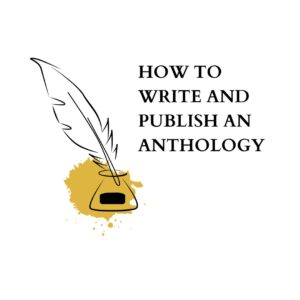How to Write and Publish an Anthology
Creating an anthology can be a rewarding endeavor for writers, offering a platform to showcase diverse voices or a collection of your own works. This guide will walk you through the essential steps to write, compile, and publish an anthology effectively. By following these steps, you can ensure that your anthology is coherent, engaging, and ready for the market.

Table of Contents
What is Anthologies?
An anthology is a collection of works, typically short stories, poems, essays, or other literary forms, compiled around a specific theme or genre. It can feature multiple authors or be a collection of a single author’s works. Understanding the purpose of your anthology is crucial as it will guide your decisions throughout the writing and publishing process.
Types of Anthologies
- Multi-author Anthologies: Collections featuring various writers contributing pieces based on a common theme.
- Single-author Anthologies: A compilation of works by one author, showcasing their range and style.
Choosing a Theme and Genre
The first step in creating an anthology is selecting a theme and genre. This decision will shape the entire project.
Tips for Choosing a Theme:
- Identify Your Audience: Consider what themes resonate with your target readers.
- Be Specific: A focused theme (e.g., “love letters from the past”) can create a more cohesive collection than a broad one (e.g., “love stories”).
- Consider Diversity: If opting for multiple authors, choose a theme that allows for varied interpretations across genres (e.g., “childhood memories” can encompass fiction, poetry, and essays).
Selecting the Genre:
Stick to one genre to make it easier for bookstores and retailers to categorize your anthology. For example, if you choose romance, ensure all contributions align with that genre.
Setting Goals and Guidelines
Once you have your theme and genre, the next step is to establish clear goals and guidelines for contributors.
Setting SMART Goals:
- Specific: Define what you want to achieve with your anthology.
- Measurable: Determine how you will measure success (e.g., number of submissions).
- Achievable: Set realistic goals based on your resources.
- Relevant: Ensure your goals align with your overall vision for the anthology.
- Time-bound: Set deadlines for submissions and publication.
Creating Submission Guidelines:
Develop comprehensive guidelines that outline:
- Content Type: Specify what types of stories or poems are acceptable.
- Word Count Limits: Establish minimum and maximum word counts (e.g., 1,500 to 5,000 words).
- Formatting Requirements: Provide details on formatting submissions (font type, size, etc.).
- Submission Process: Explain how contributors should submit their work (email, online form).
- Compensation Structure: Clarify how authors will be compensated (royalties, flat fees).
Inviting Contributions
With guidelines in place, it’s time to invite writers to contribute to your anthology.
Announcing Submissions:
Promote the call for submissions through various channels:
- Social Media: Use platforms like Twitter, Facebook, and Instagram to reach potential contributors.
- Writing Communities: Share announcements in writing groups or forums.
- Email Newsletters: Send out newsletters to your mailing list if you have one.
Creating Buzz:
Consider creating engaging graphics or promotional materials that highlight the anthology’s theme and submission details.
Organizing Submissions
As submissions begin to roll in, it’s essential to keep them organized for review.
Tracking Submissions:
Use a spreadsheet or project management tool to track:
- Author names
- Story titles
- Submission dates
- Status (reviewed, accepted, rejected)
Reviewing Entries:
Establish a review process that may involve:
- Reading each submission thoroughly.
- Evaluating them based on established criteria (relevance to theme, quality of writing).
- Selecting pieces that best fit the anthology’s vision.
Editing and Compiling the Anthology
Once selections are made, editing is crucial for ensuring consistency and quality across the anthology.
Editing Process:
Engage professional editors if possible or follow these steps:
- Content Editing: Focus on story structure, character development, and thematic elements.
- Copyediting: Check grammar, punctuation, and spelling.
- Proofreading: Conduct a final review before publication.
Compiling the Anthology:
Organize selected pieces in a way that flows well for readers. Consider factors such as pacing and thematic progression when deciding the order of stories.
Designing the Cover
An eye-catching cover design is vital for attracting readers.
Key Elements of Cover Design:
- Visual Appeal: Use colors and images that reflect the theme.
- Professional Design: Hire a graphic designer experienced in book covers.
- Title and Author Names: Ensure both are prominently displayed for visibility.
Publishing Options
Decide whether you will pursue traditional publishing or self-publishing based on your goals and resources.
Traditional Publishing:
If opting for traditional publishing:
- Research publishers who specialize in anthologies.
- Prepare submission packages including query letters and sample contents.
- Be prepared for potential rejections; persistence is key.
Self-Publishing:
For self-publishing:
- Choose platforms like Amazon Kindle Direct Publishing or IngramSpark.
- Format your manuscript according to platform guidelines.
- Set pricing strategies based on market research.
Marketing Your Anthology
Once published, effective marketing is crucial for reaching potential readers.
Marketing Strategies:
- Social Media Campaigns: Share updates about the book launch on social media platforms.
- Author Events: Organize virtual readings or signings with contributing authors.
- Book Reviews: Reach out to bloggers or reviewers who focus on anthologies or your chosen genre.
- Email Marketing: Use newsletters to inform subscribers about the release date and where to purchase it.
Frequently Asked Questions (FAQs)
1. What is an anthology?
An anthology is a collection of literary works, such as short stories, poems, essays, or other forms of writing, compiled around a specific theme or genre. It can feature multiple authors or be a single-author collection showcasing various pieces by one writer.
2. How do I choose a theme for my anthology?
Choosing a theme involves considering your target audience and what resonates with them. Aim for a specific and focused theme that allows for diverse interpretations. For example, instead of a broad theme like “love,” you might choose “unconventional love stories” to create a more cohesive collection.
3. Can I include works from multiple authors in my anthology?
Yes! Many anthologies feature contributions from multiple authors. This approach allows for a variety of perspectives and styles under a common theme. Just ensure you have clear submission guidelines and a cohesive vision for the anthology.
4. What are some tips for inviting contributions to my anthology?
To invite contributions effectively:
- Clearly communicate your theme and submission guidelines.
- Promote your call for submissions through social media, writing communities, and newsletters.
- Create engaging promotional materials to attract potential contributors.
5. How should I organize submissions for my anthology?
Use a spreadsheet or project management tool to track submissions. Include details such as author names, story titles, submission dates, and their status (reviewed, accepted, rejected). This organization will help streamline the review process.
6. What is the editing process like for an anthology?
The editing process typically involves several stages:
- Content Editing: Focus on story structure, character development, and thematic consistency.
- Copyediting: Check grammar, punctuation, and spelling.
- Proofreading: Conduct a final review to catch any remaining errors before publication.
7. How do I design the cover of my anthology?
An effective cover design should reflect the anthology’s theme and genre. Consider hiring a professional graphic designer who specializes in book covers to create an eye-catching design that includes the title and author names prominently.
8. What are my publishing options for an anthology?
You can choose between traditional publishing and self-publishing:
- Traditional Publishing: Research publishers that specialize in anthologies and prepare submission packages.
- Self-Publishing: Use platforms like Amazon Kindle Direct Publishing or IngramSpark to publish your anthology independently.
9. How can I market my anthology after publication?
Effective marketing strategies include:
- Utilizing social media to share updates and engage with readers.
- Organizing virtual readings or author events.
- Reaching out to book bloggers or reviewers for feedback.
- Using email newsletters to inform subscribers about the release.
10. What are some common challenges in writing and publishing an anthology?
Common challenges include:
- Coordinating contributions from multiple authors.
- Ensuring consistency in tone and quality across submissions.
- Navigating the editing process effectively.
- Marketing the anthology successfully in a competitive market.
11. How long should the pieces in my anthology be?
Word count limits can vary based on the type of content you’re compiling. Generally, short stories might range from 1,500 to 5,000 words, while poems can vary widely in length. Be sure to specify your preferred word count in your submission guidelines.
12. Do I need to compensate contributors?
Compensation varies based on your budget and publishing model. Some anthologies offer royalties based on sales, while others may provide flat fees or simply publish contributors’ work without financial compensation. Be transparent about compensation in your guidelines.
13. Can I self-publish an anthology if it contains multiple authors’ works?
Yes! Many successful anthologies are self-published with contributions from various authors. Just ensure you have permission from all contributors regarding their work’s inclusion in the anthology.
14. How do I ensure quality across different submissions?
Establish clear submission guidelines that outline expectations regarding content quality and thematic relevance. A thorough review process involving multiple readers or editors can also help maintain high standards throughout the anthology.
15. What should I include in my submission guidelines?
Your submission guidelines should include:
- Theme and genre specifications
- Content type (e.g., short stories, poetry)
- Word count limits
- Formatting requirements
- Submission process details
- Compensation structure
Conclusion
Writing and publishing an anthology requires careful planning, collaboration with authors, and strategic marketing efforts. By following these steps—from choosing a compelling theme to promoting your finished product—you can successfully compile an anthology that resonates with readers and showcases diverse voices in literature.




